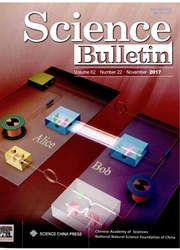

 中文摘要:
中文摘要:
接口在之间一二维(2D ) 原子水晶和金属表面能被认为是 nanoreactor,在分子,吸附和催化反应可以发生。在这个工作,我们证明氧置闰和解吸附作用发生在在六角形的硼氮化物(h-BN ) 之间的接口 overlayer 和磅(111 ) 由使用在周围附近的压力 X 光检查光电子出现光谱学(NAP-XPS ) ,光致核裂变电子显微镜学,和低精力的电子显微镜学。而且,在 h-BN 盖子下面的公司氧化被 NAP-XPS 也观察。现在的结果显示在 2D 盖子下面的 nanospace 能被用于表面反应,在小说,表面化学可以被 nanoconfinement 效果导致。
 英文摘要:
英文摘要:
The interface between a two-dimensional (2D) atomic crystal and a metal surface can be regarded as a nanoreactor, in which molecule adsorption and catalytic reactions may occur. In this work, we demonstrate that oxygen intercalation and desorption occur at the interface between hexagonal boron nitride (h-BN) overlayer and Pt(111) surface by using near-ambient pressure X-ray photoelectron spectroscopy (NAP-XPS), photoemission electron microscopy, and low-energy electron microscopy. Furthermore, CO oxidation under the h-BN cover was also observed by NAP-XPS. The present results indicate that the nanospace under the 2D cover can be used for surface reactions, in which novel surface chemistry may be induced by the nanoconfinement effect.
 同期刊论文项目
同期刊论文项目
 同项目期刊论文
同项目期刊论文
 Enhanced Electron Penetration through a Ultrathin Graphene Layer for Highly Efficient Catalysis of H
Enhanced Electron Penetration through a Ultrathin Graphene Layer for Highly Efficient Catalysis of H Graphene-supported iron-based nanoparticles encapsulated in nitrogen-doped carbon as a synergistic c
Graphene-supported iron-based nanoparticles encapsulated in nitrogen-doped carbon as a synergistic c Amide-functionalized carbon supports for cobalt oxide toward oxygen reduction reaction in Zn-air bat
Amide-functionalized carbon supports for cobalt oxide toward oxygen reduction reaction in Zn-air bat Silicon carbide-derived carbon nanocomposite as a substitute for mercury in the catalytic hydrochlor
Silicon carbide-derived carbon nanocomposite as a substitute for mercury in the catalytic hydrochlor Local structure of titania decorated double-walled carbon nanotube characterized by scanning transmi
Local structure of titania decorated double-walled carbon nanotube characterized by scanning transmi FeN particles confined inside CNT for light olefin synthesis from syngas: Effects of Mn and K additi
FeN particles confined inside CNT for light olefin synthesis from syngas: Effects of Mn and K additi Synthesis of graphitic mesoporous carbons with different surface areas and their use in direct metha
Synthesis of graphitic mesoporous carbons with different surface areas and their use in direct metha An exchange intercalation mechanism for the formation of two-dimensional Si structure underneath gra
An exchange intercalation mechanism for the formation of two-dimensional Si structure underneath gra Gas-phase electrocatalytic reduction of carbon dioxide using electrolytic cell based on phosphoric a
Gas-phase electrocatalytic reduction of carbon dioxide using electrolytic cell based on phosphoric a Enhancing chemical reactions in a confined hydrophobic environment: an NMR study of benzene hydroxyl
Enhancing chemical reactions in a confined hydrophobic environment: an NMR study of benzene hydroxyl Facile encapsulation of nanosized SnO2 particles in carbon nanotubes as an efficient anode of Li-ion
Facile encapsulation of nanosized SnO2 particles in carbon nanotubes as an efficient anode of Li-ion Enhanced Catalytic Activity of Sub-nanometer Titania Clusters Confined inside Double-Wall Carbon Nan
Enhanced Catalytic Activity of Sub-nanometer Titania Clusters Confined inside Double-Wall Carbon Nan Cobalt nanoparticles encapsulated in nitrogen doped carbon as a bifunctional catalyst for water elec
Cobalt nanoparticles encapsulated in nitrogen doped carbon as a bifunctional catalyst for water elec Density Functional Calculations on the Distribution, Acidity, and Catalysis of TiIV and TiIII Ions i
Density Functional Calculations on the Distribution, Acidity, and Catalysis of TiIV and TiIII Ions i An Exchange Intercalation Mechanism for the Formation of a Two-Dimensional Si Structure Underneath G
An Exchange Intercalation Mechanism for the Formation of a Two-Dimensional Si Structure Underneath G Dynamic structural changes of perovskite-supported metal catalysts during cyclic redox treatments an
Dynamic structural changes of perovskite-supported metal catalysts during cyclic redox treatments an Comparative studies of redox behaviors of Pt-Co/SiO2 and Au-Co/SiO2 catalysts and their activities i
Comparative studies of redox behaviors of Pt-Co/SiO2 and Au-Co/SiO2 catalysts and their activities i Comparative studies in redox behaviors of Pt-Co/SiO2 and Au-Co/SiO2 catalysts and their activities i
Comparative studies in redox behaviors of Pt-Co/SiO2 and Au-Co/SiO2 catalysts and their activities i Low-temperature catalytic oxidation of toluene over nanocrystal-like Mn-Co oxides prepared by two-st
Low-temperature catalytic oxidation of toluene over nanocrystal-like Mn-Co oxides prepared by two-st Hexagonal Boron Nitride Cover on Pt(111): A New Route to Tune Molecule-Metal Interaction and Metal-C
Hexagonal Boron Nitride Cover on Pt(111): A New Route to Tune Molecule-Metal Interaction and Metal-C 期刊信息
期刊信息
